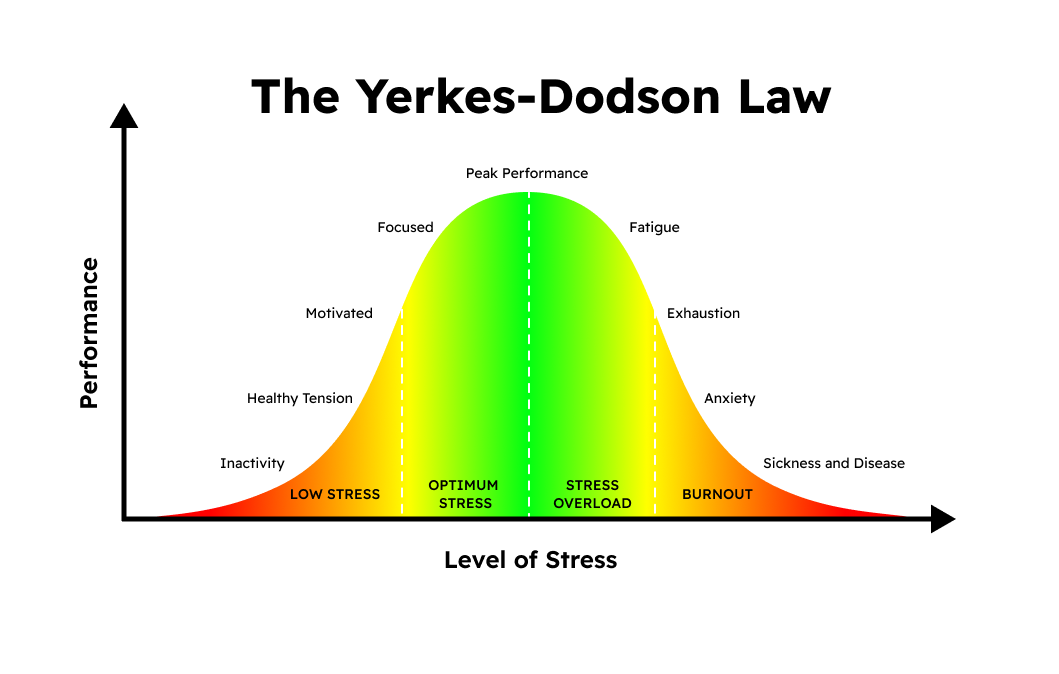Optimising performance and stress
Optimising performance and stress
5 minutes

One of the basic tenets of leadership is driving people towards success and development. At the same time, when does it become too much? How do you know when you should pull the brakes?
To optimise your team, discovering each person’s current performance and stress levels is crucial. These help paint a bigger picture of their current state in their roles, but also knowing what they can be capable of.
The Yerkes-Dodson Law looks at how stress can have a positive or negative impact on performance.
When there is little to no stress, they are more likely to feel unstimulated, inactive and disengaged. As stress increases, so too does their performance and motivation to complete their goals. However, too much stress can also result with burnout and disease.
Essentially, encouraging optimal performance and motivation comes with the right amount of tension.
Stress responses vary from one person to another. Their personal circumstances, tolerance, environment, and values all influence how they respond.
Researchers Dorsey, Scherer, Eckhoff, and Furberg (2022) stated that stress is essentially multidimensional, and is linked across different factors. This holistic understanding of stress requires looking into three domains: environmental stressors, psychological and biological reactions, and how long the stress lasts.
To help you figure out where your team member stands on the curve, consider the following domains and their questions:
How do they emotionally respond to work interruptions and sensitive deadlines?
Have they mentioned feeling stressed or burnt out?
Have they been working long hours recently? How different are they now than when they first started?

Hellomonday
